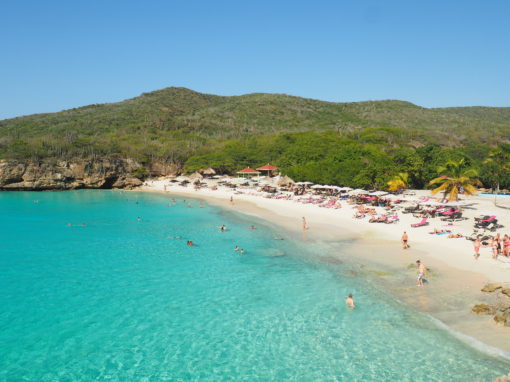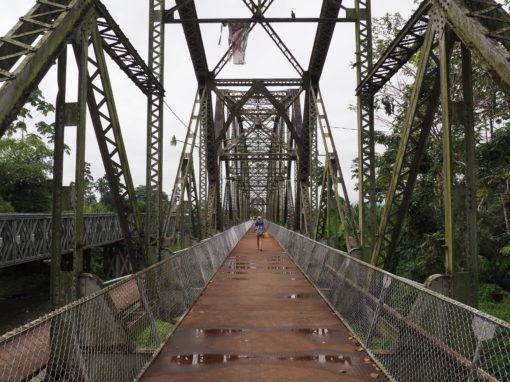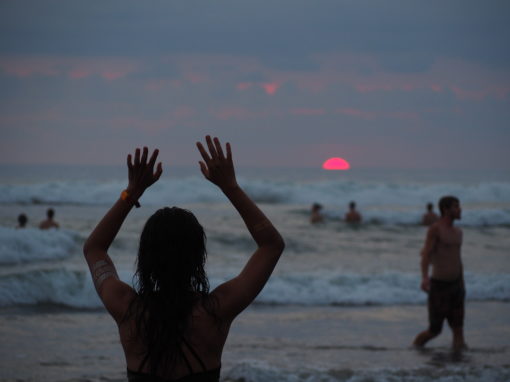WHAT: A tour in the Butterfly Conservatory WHERE: Costa Rica, in El Castillo, near La Fortuna. 158 km away from capital San José HOW LONG: A visit is around 2 or 3 hours, if you also do the small jungle hike after your visit to the butterfly areas HOW MUCH: $15,- p.p. for a foreigner
Spread your wings in La Fortuna
Not many people have the luck to see the majestic appearance of the Arenal volcano straight as they arrive in La Fortuna. Or when they wake up after the first night over there. Or after they wait a couple of days in the area. For those that are just like me tired of staring at the clouds, wishing them to disappear: there is a great way to make time pass by while in the waiting room!
No, I’m not talking about the obvious bubbling in the hot springs, water rafting or walking over the hanging bridges. If you want to avoid the hustle and bustle of the Arenal area, a visit to the nearby cute, rural town El Castillo is a splendid off the beaten track option. It features some great views over the lake, but more importantly it stars a splendid so-called ‘mariposario’ (butterfly farm): The Butterfly Conservatory. Even if you’re not that much into butterflies, there is a lot to see. So spread your wings and follow the dirty, rocky road towards the west.
Almost at the end of that road, you find the conservatory tucked away in the midst of a tropical rain forest. The small building doesn’t seem very attractive at all at first side. But as you walk inside, shiny golden chrysalis and caterpillars are waiting for you, in all different stages of development. Their golden appearance is remarkable in itself, but that’s not just it. With a bit of luck you might experience the ‘birth’ of one of those butterflies, as we did. This truly is a magical process to behold. The wings are very slowly being pushed out of the chrysalis and are unfolded until they reach their fullest potential; then they begin to shine. Thus, you can’t start the so-called ‘Metamorphosis Tour’, offered by the conservatory, in a better way.
Lena, who welcomes new visitors like us, shows us which butterflies emerge from what chrysalis and introduces us to the ‘insect museum’: the largest exhibition of butterflies in Costa Rica, displayed in cabinets. Rather faded are the conserved ones, but the cabinets give a nice overview anyway. Afterwards you can move on your own through the gardens and jungle.
The Butterfly Conservatory leans on the enthusiasm of volunteers, and the guides are mainly from the States or Europe. While walking around in the habitats they provide you with whatever questions you have. They also know where to spot the more reserved butterflies for you. No need for that while looking for the Blue Morpho; once arrived in the first covered atrium, these ones skim everywhere over your head. Volunteer Corianne, from Canada, approaches us telling that Costa Rica has around 1250 species of butterflies, some 10% of the world’s total.
Though fascinated by this fact, some rather unpleasant smell is distracting us. Corianne points to the rotting and fermenting fruit in the baskets, spread out over the habitat. “This is what the diet of the butterflies exists off, along with nectar”, she explains. “The more fermented the fruit, the yummier they consider it”. You might think that the ‘drunken’ butterfly fluttering is caused by that fermentation, but in facts the butterflies maneuver in this weird way to distract the predators that are after them.
After the Morphos we enter the domain of the Golden Owl Eye Butterflies. Their striking eyespots resemble eyes of owls or snakes, again to scare away potential enemies. Even if a predator does decide to attack, tells Corianne, they are more likely just to take a bite out of the eye spotted wing. Thus, the butterfly can survive if the wings are destroyed. Nature is a clever fellow.
“In this habitat there is a butterfly that you can’t easily find” encourages Corianne us while we enter the last butterfly atrium. Fortunately for us she spots the Glass Wing Butterfly right away. Those transparent creatures are indeed hard to spot. If these ones impress you, you’ll probably be stunned by the Starry-Night Cracker, named after Van Gogh’s famous painting. Why becomes clear right away; the butterfly is as well a true work of art.
Enough regarding the butterflies. While leaving the atrium, our guide shows us some typical Costa Rican herbs, such as lemon grass, in the medicinal garden, before we move on to the frog habitat. Poisonous fellows are to be found in here, but don’t worry, just like the snakes they’re safely behind glass. Corianne tells us that the frogs can become poisonous due to their diet; the ones that eat a lot of protein are the most toxic.
The frog area is still being expanded, but nonetheless it is already nice to see these different types of frogs from up close, such as the handsome (hourglass) tree frogs and poison dart frogs. Flattened against the underside of a leaf, they are perfectly camouflaged.
While in the frog habitat, the sound of the howler monkeys is already overwhelming. Time it is to face them during our next 45-minute walk through the jungle along the river. Next to bird watching (we saw some toucans, parrots and hummingbirds, but apparently there are over 350 species in here), there is a gazebo where you can enjoy the spectacular views of the area. Though the rain increased, the monkeys didn’t mind the pouring water at all. Even better, such a rainy day gives you the feeling you walk around in Jurassic Park. And I guess on a sunny day you can imagine how Snow White, surrounded by animals, would feel if she’d live in the tropics.
Thus after an entire morning at the Butterfly’s Conservatory I have to say this is the best mariposario that I have visited so far (of 4 in total) in Costa Rica. The atmosphere is magical, the volunteers dedicated and it is superb to walk through the life cycle of a butterfly as they float over your head. Or land on it. You just simply want to linger for hours amongst these gorgeous colored fellows. It makes you forget why you’re here… who needs a volcano anyway.
Here’s where to find that butterfly garden!









